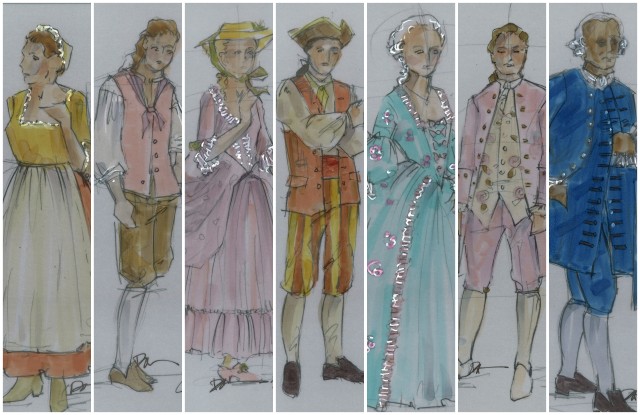
The second in a series of short posts that will get you ready for The Ghosts of Versailles, a few easily digestible paragraphs at a time.
Yesterday, I discussed the titular Ghosts and mentioned that one of them – Beaumarchais – wants to change the course of history and save Marie Antoinette from the guillotine. The tools he uses to achieve that goal are the characters he created in his plays. And fortunately for opera lovers, these characters are familiar.
Figaro, Count Almaviva, and Rosina (who becomes the Countess Almaviva) are introduced in the first play of the trilogy: The Barber of Seville. They all return in The Marriage of Figaro, and are joined by the maid Susanna (who becomes Figaro’s wife) and the young man Cherubino. So far, fairly familiar stuff.
It gets a little more complicated with the third play, La mère coupable (The Guilty Mother.) 20 years have passed since The Marriage of Figaro, and Cherubino has died in the war. There are two important new members of the household, though: Léon is the Countess’s son (the product of an affair she had with Cherubino), and Florestine is the Count’s daughter (the product of an affair with an unnamed woman.)
Composer John Corigliano and librettist William M. Hoffman create a captivating opera-within-an-opera structure in which Beaumarchais uses Figaro and his friends to hatch a plot that will save Marie Antoinette.
More about that plot coming at you next week. In the meantime, a guest post and a few Artist Spotlights will take us through the weekend while I step away from the Trap for my son’s wedding! :)
Your posts, Kim, have been wonderful. As a member of the orchestra, largely illiterate regarding what the beautiful music we are playing has to do with the action on (unseen from the pit) stage, I am indebted to you for bringing me up to speed!